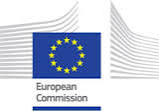Chemycal has been acquired by 3E
Learn MoreChemycal has been acquired by 3E
Learn MoreDiscover how Chemycal PRO helps you boosting your regulatory monitoring:

The use of cobalt has experienced a strong growth in the last decades. Due to its high economic importance and high supply risk, it has been classified as a critical raw material for the EU and other economies. Part of the EU's strategy is intended to secure its availability, through fostering its efficient use and recycling. The latter is affected by factors such as the amount of available end-of-life products, and their collection-to-recycling rate. A novel methodology to analyze the impact of these factors on the cobalt flows in society is the model MaTrace, which can track the fate of materials over time and across products. The MaTrace model was expanded, adapted, and applied to predict the fate of cobalt embedded in finished products in use in the EU, considering the underlying life cycle phases within the technosphere.
Eleven scenarios were built, assessing different options in the implementation of relevant EU's policies. The flows were projected for a period of 25 years, starting in 2015. The results of the baseline scenario show that after 25 years, around 8% of the initial stock of cobalt stays in use, 3% is being hoarded by users, 28% has been exported, and 61% has been lost. The main contributors to the losses of the system are the non-selective collection of end-of-life products, and the export of end-of-life products, recycled cobalt and final products. The results of the scenarios show that higher collection-to-recycling rates and lower export could increase up to 50% the cobalt that stays in use.
CONTINUE READING ON ec.europa.eu
2013 © MyChemicalMonitoring. ALL Rights Reserved. About Us | Terms and Conditions